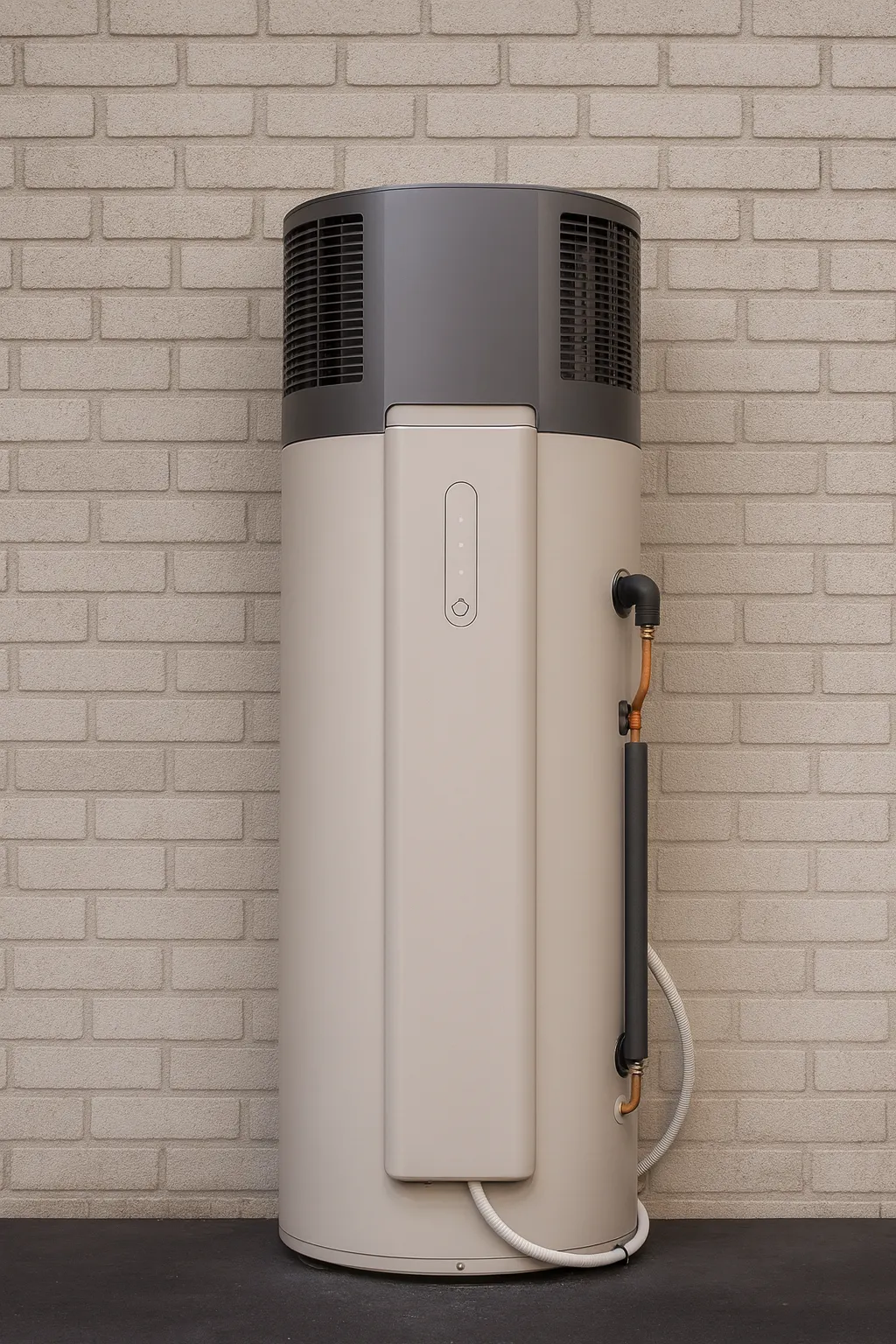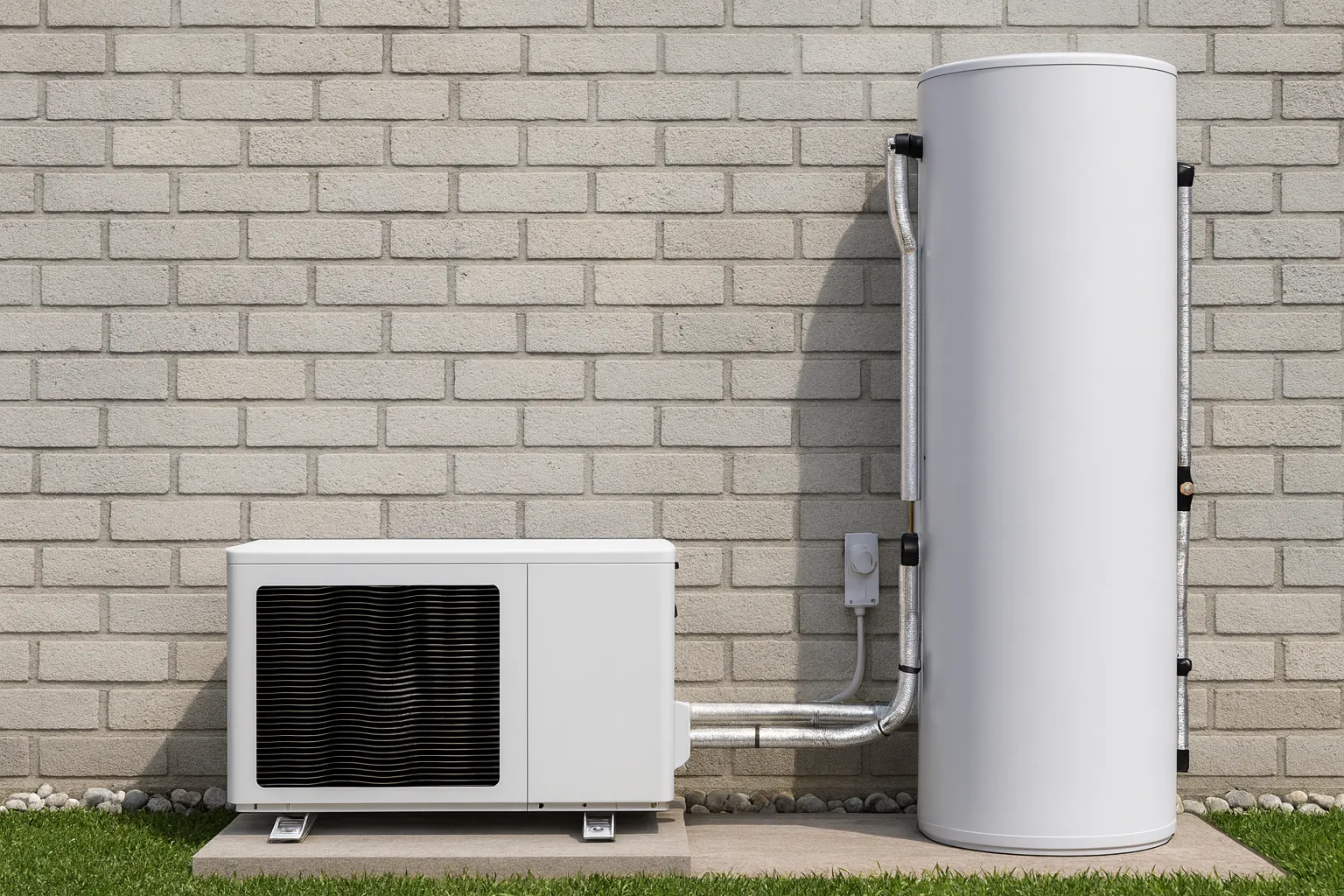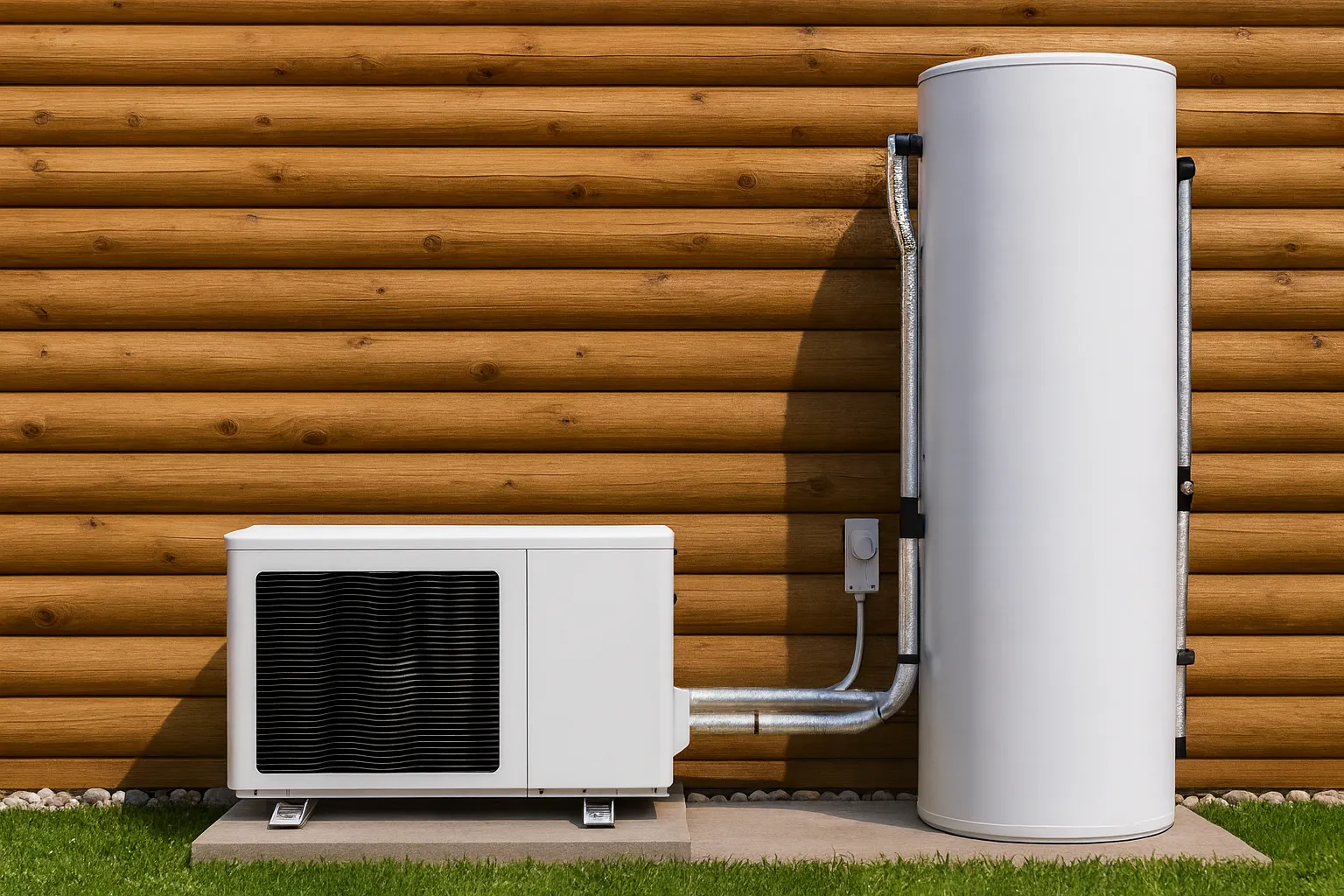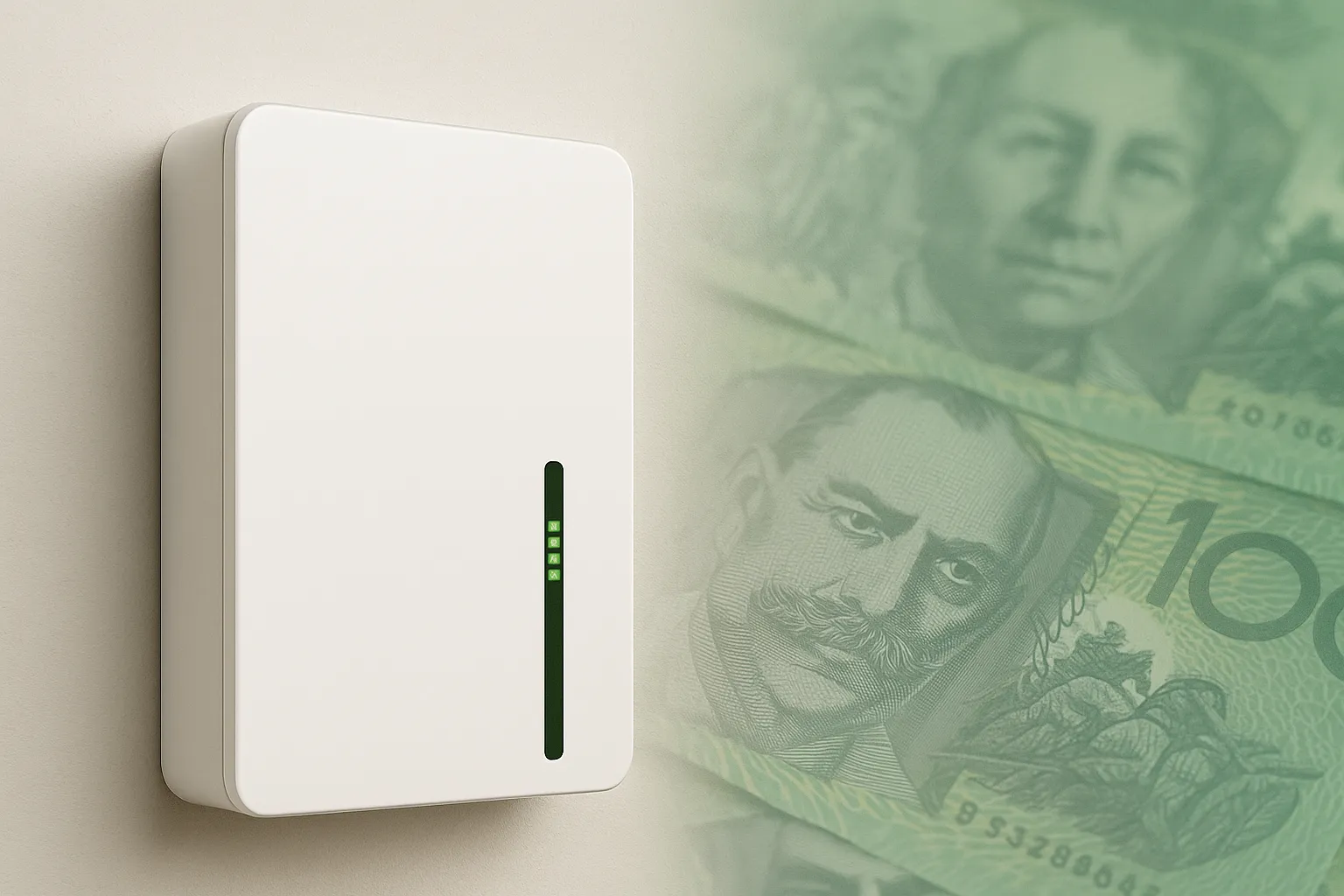If you’ve ever stood under a hot shower thinking, “I wonder if this is costing me more than my last weekend away,” there’s a good chance your water heating system is guilty as charged. Traditional electric hot water heaters are basically kettles on steroids, chewing through power to keep water hot even while you’re off at work or the beach. Imagine the amount of energy being consumed by these systems globally when it’s totally unnecessary to keep the water hot just in case someone might turn the tap on.
A heat-pump hot water system flips that wasteful logic on its head. Instead of directly heating water with electricity, it runs a refrigeration cycle to pinch warmth from the surrounding air and dump it into your water tank. That means it’s using 60–75% less electricity than the old “element in a tank” setup. The only electricity it really needs is to run the fan and compressor – a bit like a reverse-cycle air conditioner, except your living room stays the same temperature and your shower gets toasty.
Not Quite Solar, But Close Enough
You could even think of it as a solar hot water system in disguise. The heat in the air ultimately comes from the sun, but unlike rooftop solar hot water, there are no panels to squeeze onto your roof or boost systems to fiddle with. Installation is often easier, and you won’t be arguing with your roofer about collector panel angles.
The catch? Heat-pumps do need a steady supply of fresh air to work, so they’re best installed in a well-ventilated spot outdoors. And yes, they make a bit of noise while running. We’re not talking rock concert levels, but enough that you wouldn’t want one parked outside your bedroom window – or your neighbour’s.
Tip: when you’re getting quotes, ask the supplier for the decibel rating and whether they can position it so you’re not listening to a gentle hum every time someone has a shower.
Integrated vs Split: The Two Flavours of Heat Pumps
Integrated units
One chunky unit with the tank and heat pump in the same body. Often the heat pump sits on top of the cylinder. Great for compact setups, but heavier and harder to manoeuvre during installation. However, that's not really a valid issue for the owner of the system long-term.

Split systems
The compressor, fan, and evaporator live outside, while the tank can be inside or outside. They work a lot like split-system air cons and give you more flexibility in where you put the bits.

Compare Hot Water Heat Pump Prices from Local Installers
Efficiency, Heat Loss, and Why Size Matters
No matter how clever the system, any tank of hot water slowly leaks heat through its insulation. The bigger the tank, the more energy you’ll lose just keeping it warm. Small households with massive tanks are basically heating water for the whole street.
If you’re heading off for a few weeks, flick it off at the switchboard and pocket the savings.
If you’re on an off-peak electricity tariff, make sure your system can store enough hot water overnight to last you the day – otherwise you’ll be making tea with cold water by lunchtime.
Cold climate? Your system’s reheat speed will slow when the air temperature drops. Some units have a built-in electric boost to keep up in chilly weather, but that’ll also bump up running costs.
Timers: Your Best Friend if You’ve Got Solar PV
If you’ve got panels on the roof, a timer lets you run the heat pump during the sunny part of the day, soaking up your own electricity rather than exporting it for a measly feed-in rate.
Heat-Pump vs the Alternatives
- Gas hot water: Once the budget king, but modern heat pumps can now beat it on running costs – without locking you into gas price rises.
- Solar hot water: Great in theory, but pricier to install and needs boosting in winter. Takes up valuable roof space you might prefer for PV.
- Electric storage: Cheap upfront, expensive forever after.
Choosing the Right Size
Too small and you’ll be queuing for the shower before the hot runs out. Too big and you’re wasting energy keeping water hot you’ll never use. Work with your supplier to choose a storage system that’s matched to the number of people in your household, so you’re heating just the right amount for your daily needs.
Replacing Your Old System? Now’s the Time
If your current unit is on its last legs, resist the temptation to do a like-for-like swap. With government incentives available for efficient upgrades, you could end up with a heat-pump that slashes your bills and your carbon footprint in one go.
Heat Pump Hot Water Incentives
Here’s a little-known bonus: in addition to the national solar incentives, there’s a federal scheme for hot water heat pumps that can shave a significant chunk off the price — often in the ballpark of $750.
Officially, this isn’t called a “rebate” at all. The government’s term is Small-scale Technology Certificates (STCs), which work like a tradable credit for installing efficient technology. In practice, the supplier claims the STCs on your behalf and takes the value off your purchase price.
Curious about the number of STCs your chosen heat pump might earn? Try this updated calculator to find out.
Hot Water Heat Pump STC Calculator
To qualify, the heat pump generally needs to have a storage tank of 425 litres or less. The number of STCs awarded depends on how much energy the unit is expected to save and the climate zone where it’s installed. Interestingly, warmer regions make the technology run more efficiently, but because households there use less hot water, the certificate tally can be lower.
In most cases, you won’t need to fill out paperwork or chase payments yourself — the discount is simply factored into the “installed price” you’re quoted. If you’re curious, there are online calculators that can estimate how many certificates a specific system might earn before you commit.
If you like the idea of more hot showers and smaller power bills — without the roof full of panels or a gas bill lurking in the letterbox — a heat pump hot water system is well worth a look.



